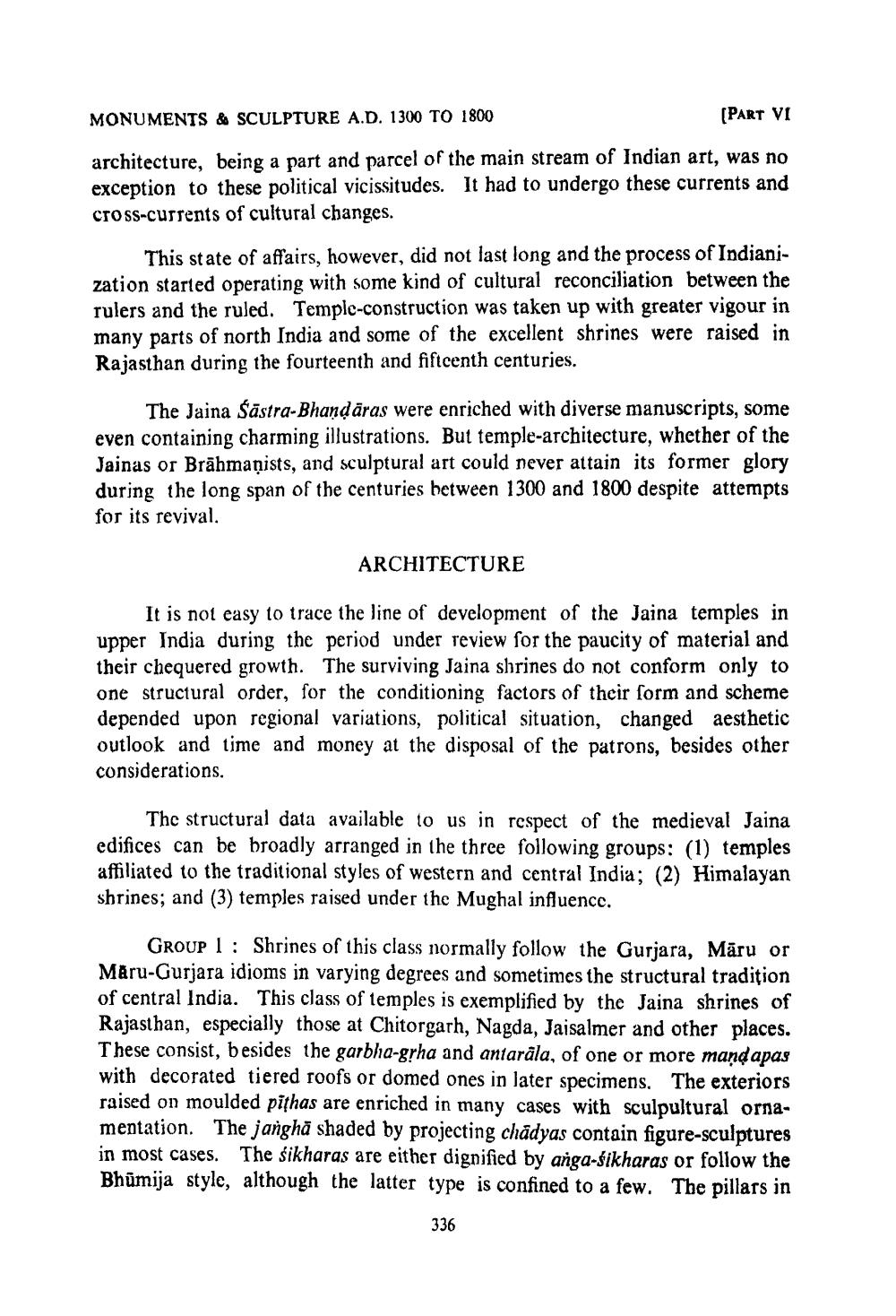________________
MONUMENTS & SCULPTURE A.D. 1300 TO 1800
(PART VI
architecture, being a part and parcel of the main stream of Indian art, was no exception to these political vicissitudes. It had to undergo these currents and Cross-currents of cultural changes.
This state of affairs, however, did not last long and the process of Indianization started operating with some kind of cultural reconciliation between the rulers and the ruled. Temple-construction was taken up with greater vigour in many parts of north India and some of the excellent shrines were raised in Rajasthan during the fourteenth and fiftcenth centuries.
The Jaina Šāstra-Bhandāras were enriched with diverse manuscripts, some even containing charming illustrations. But temple-architecture, whether of the Jainas or Brāhmanists, and sculptural art could never attain its former glory during the long span of the centuries between 1300 and 1800 despite attempts for its revival.
ARCHITECTURE
It is not easy to trace the line of development of the Jaina temples in upper India during the period under review for the paucity of material and their chequered growth. The surviving Jaina shrines do not conform only to one structural order, for the conditioning factors of their form and scheme depended upon regional variations, political situation, changed aesthetic outlook and time and money at the disposal of the patrons, besides other considerations.
The structural data available to us in respect of the medieval Jaina edifices can be broadly arranged in the three following groups: (1) temples affiliated to the traditional styles of western and central India; (2) Himalayan shrines; and (3) temples raised under the Mughal influencc.
GROUP 1 : Shrines of this class normally follow the Gurjara, Māru or Māru-Gurjara idioms in varying degrees and sometimes the structural tradition of central India. This class of temples is exemplified by the Jaina shrines of Rajasthan, especially those at Chitorgarh, Nagda, Jaisalmer and other places. These consist, besides the garbha-grha and antarala, of one or more mand apas with decorated tiered roofs or domed ones in later specimens. The exteriors raised on moulded pithas are enriched in many cases with sculpultural ornamentation. The janghā shaded by projecting chádyas contain figure-sculptures in most cases. The sikharas are either dignified by anga-śikharas or follow the Bhūmija style, although the latter type is confined to a few. The pillars in
336




